There’s a piece of outdoor gear that you need to have if you don’t already have it. It’s called a trail quilt. With the Kammok Firebelly and Bobcat, I’ve seen up close just how useful and versatile these products are.
It’s time to throw away your ideas about what camping should look like as I delve into why quilts are better in the quilt vs. sleeping bag argument. Beyond that, find out how else you can use a trail quilt and why you need to add it to your list of must-have gear.
Read more about outdoor gear
- Kammok Arctos review – the best winter trail quilt?
- Kammok Firebelly 30 trail quilt review
- The best portable hammock stand
- Travel tripod that you need to have
- More travel gear reviews
How to get the best deals in travel
- Hottest deals – Bookmark the travel deals page.
- Car rentals – stop getting ripped off and learn about car rental coupon codes.
- Hotels – Use corporate codes or get Genius 2 tier with Booking.
- Flights – Have you ever heard of the “Everywhere” feature?
- Insurance – Make sure you’re covered and learn more about where to buy the best travel insurance.
In This Article
So, what is a trail quilt?
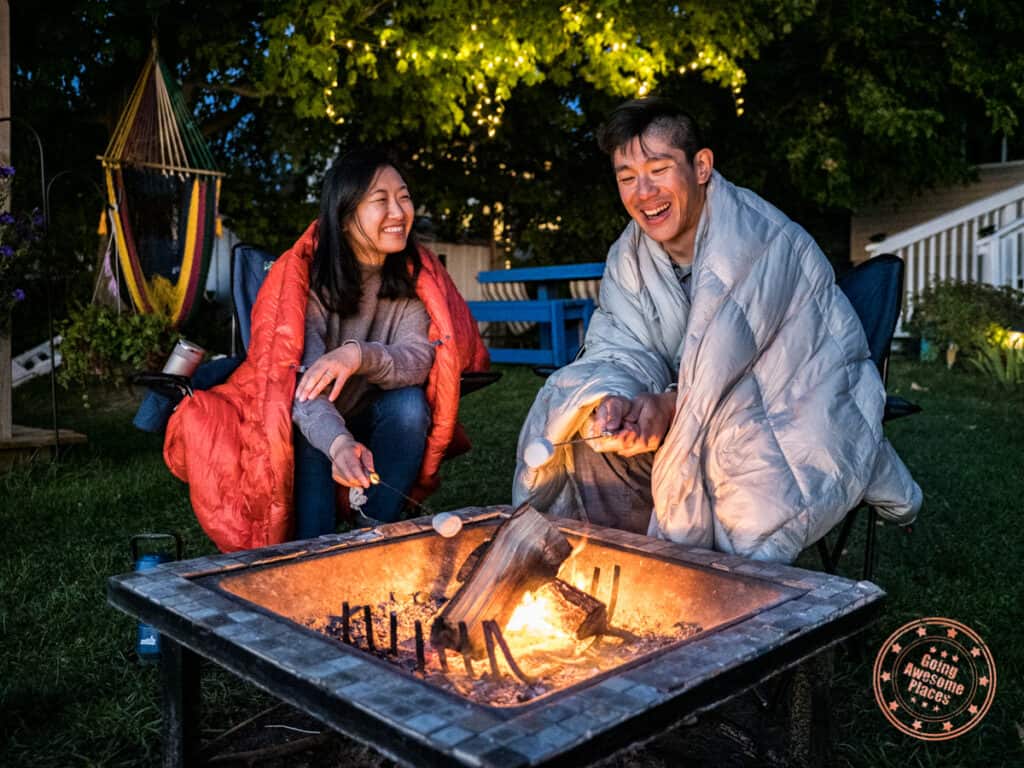
Quilts are one of the latest trends in outdoor adventure gear although it is still a road less travelled beyond those that follow the ultralight community.
It comes in many names but you’ll see a couple of names thrown around – trail quilt, camping quilt, backpacking quilt, hammock quilt, and down quilt.
All of them refer to the same thing. A trail quilt is an insulated down blanket engineered to regulate temperature while offering freedom of movement while staying incredibly light.
This is a new revelation in the camping and outdoor world because what it does is cut the weight of what you find in a traditional sleeping bag, creating a sleep system that’s actually more effective, and is also so much more versatile.
How to use a quilt?
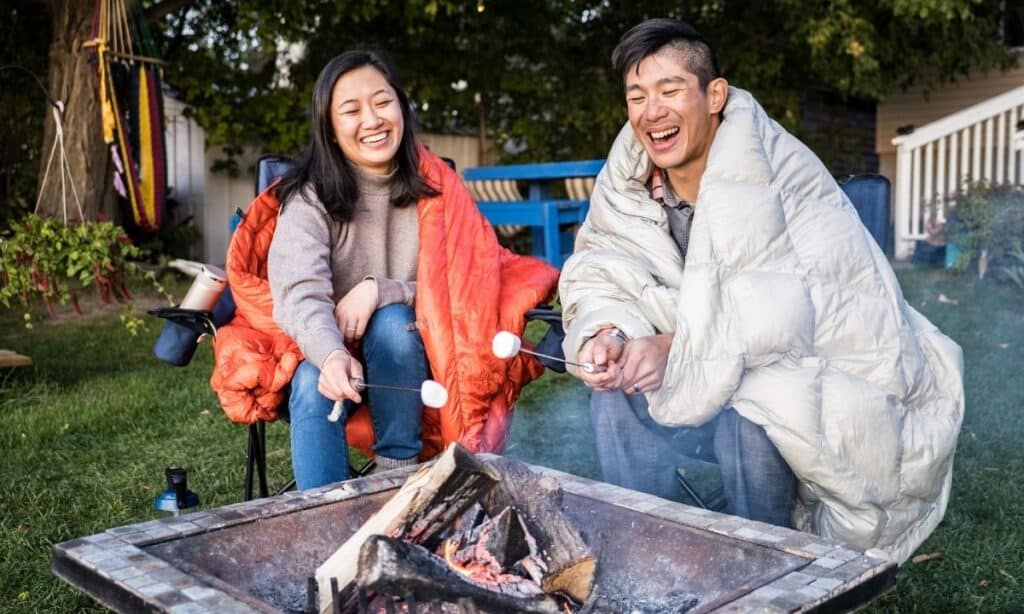
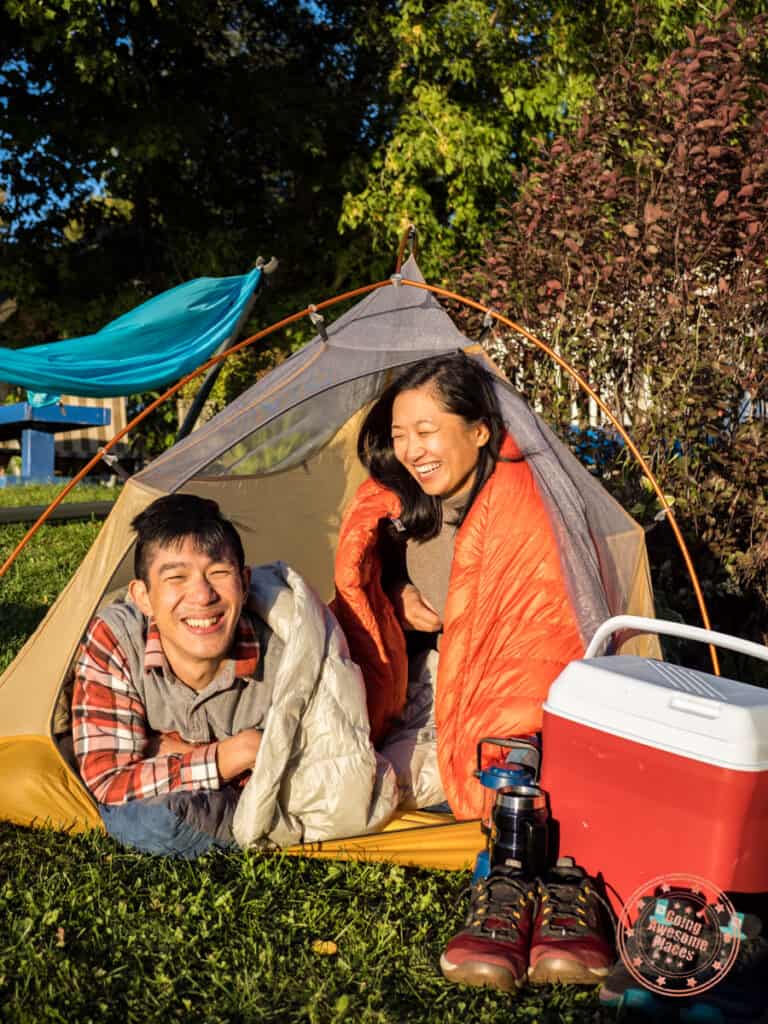
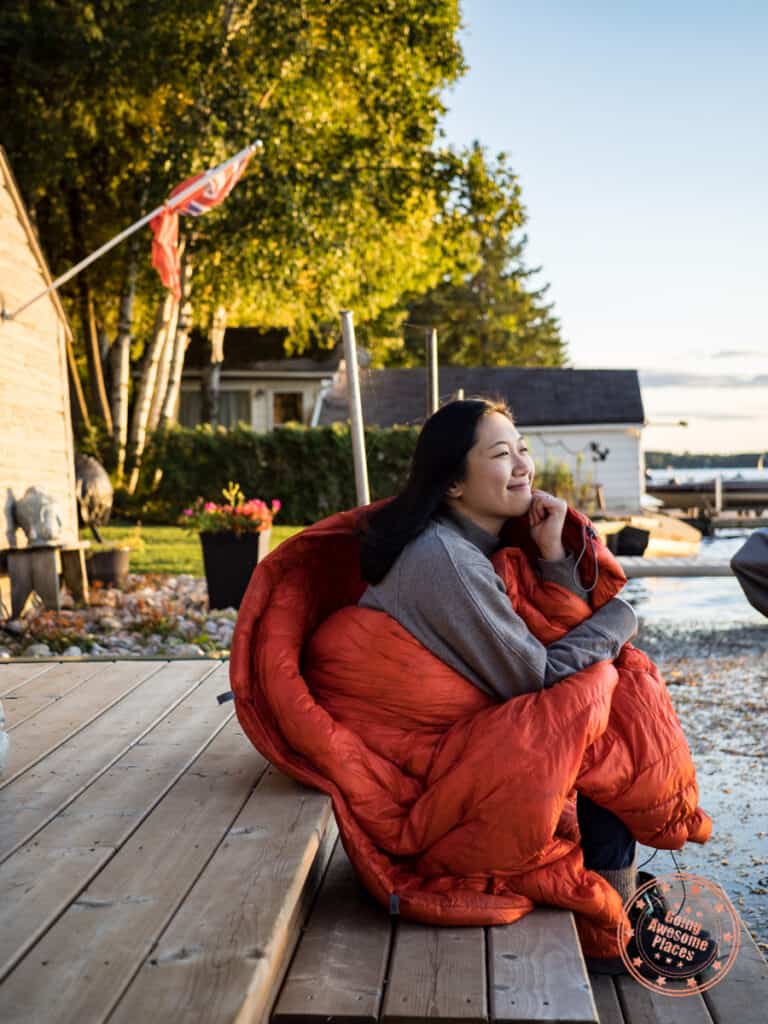
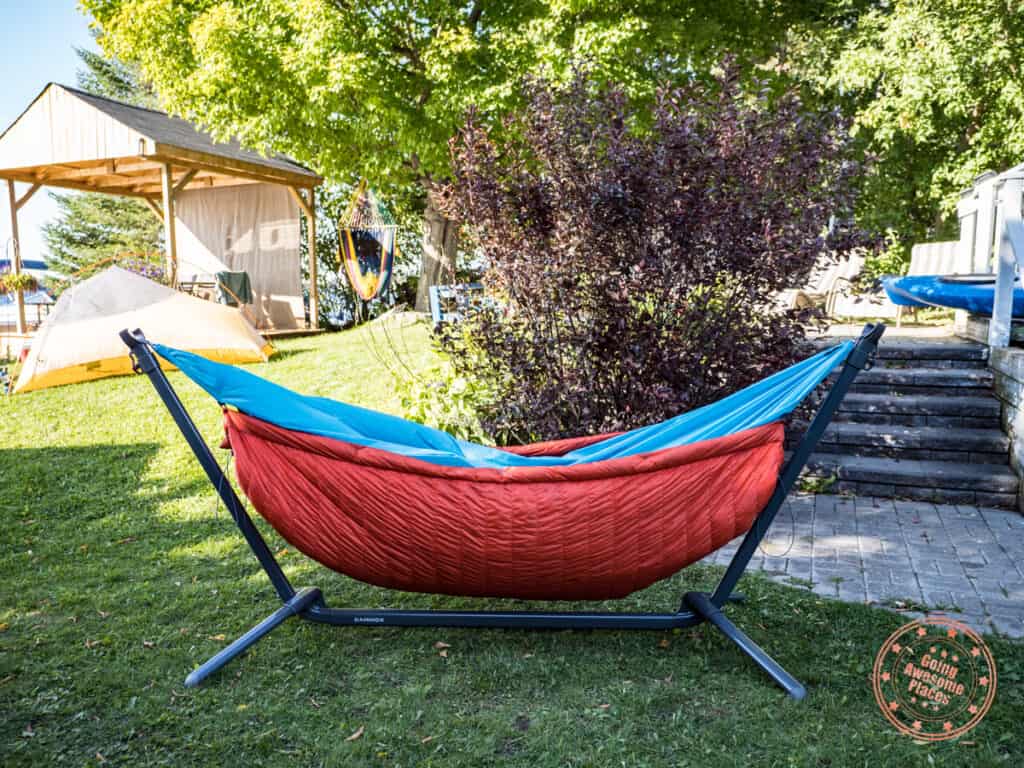
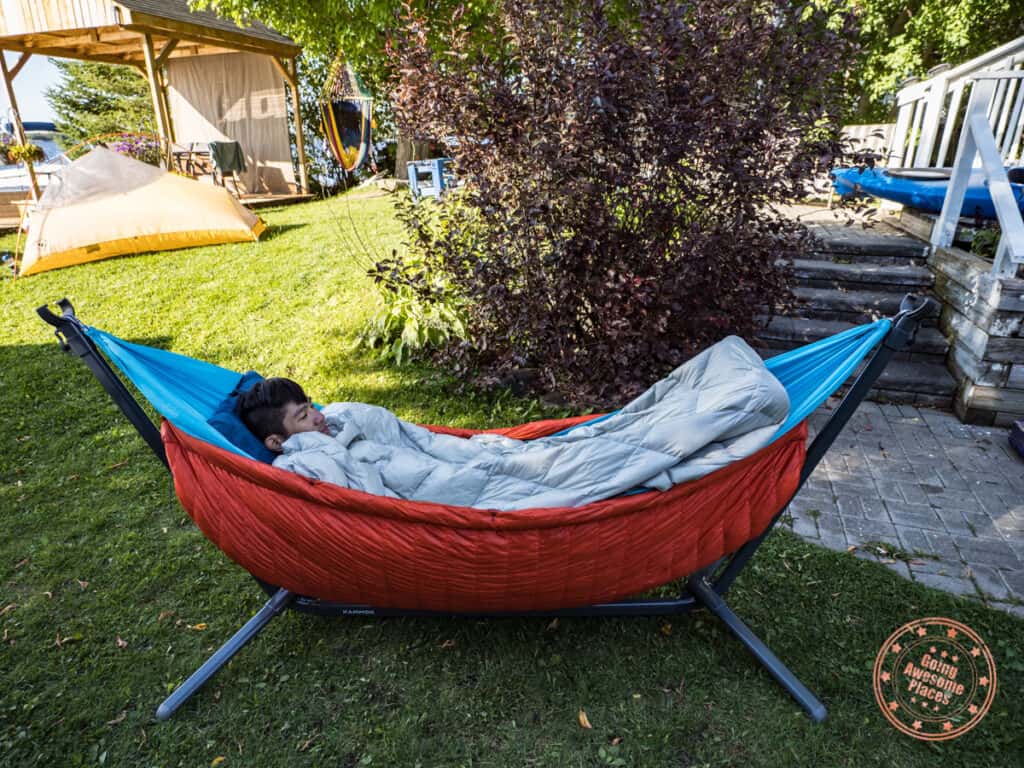
Versatility is why the quilt wins in my books. There are so many uses for a quilt that goes beyond using it as a sleeping bag.
Here are some of the key ways you can use a quilt:
- Blanket – As appearances go, this is the most obvious use of a camping quilt. Throw it around you when you need to stay warm.
- Sleeping bag – Whether as a minimalist sleeping bag or paired with a sleeping pad, we’ll get into the section below why quilts are awesome.
- Underquilt for a hammock – For hammock users, an underquilt is key to staying warm.
- Overquilt for a hammock – In cooler climates, an overquilt pairs with the underquilt for the complete system.
The other part that’s overlooked with a trail quit is that it goes beyond outdoors. Let’s say you’re staying at a cottage and need a quick blanket or if you’re at home and want something soft and warm to cuddle into. The quilt can do it all.
The quilt is designed to move with you in all of your different adventures. Keep your quilt nearby because it’s handy to have around.
Why a quilt vs. sleeping bag?
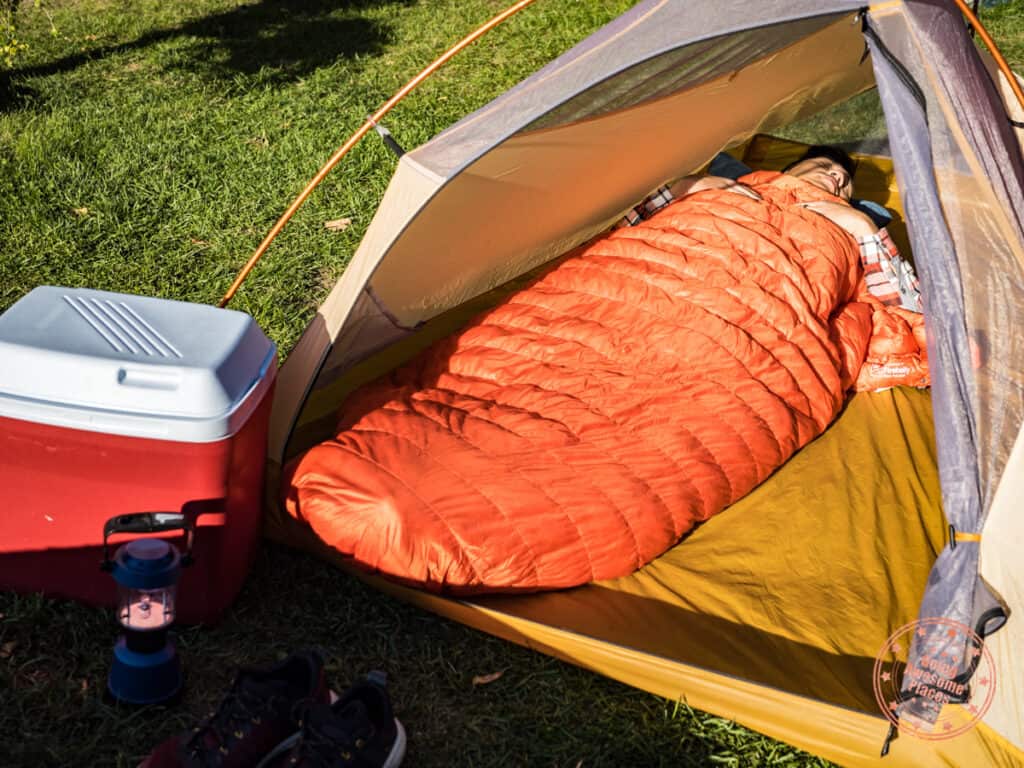
If you’re here, you’re probably thinking the exact same question. You’ve been accustomed to using sleeping bags for your whole life so what makes a quilt better?
First, you need to realize that trail quilts aren’t just a basic blanket. Quilts like the Kammok Firebelly and Kammok Bobcat are built with specific button snaps and cinching shock cords, and elastic straps that allow them to work as a sleeping bag.
So how is a quilt better than a sleeping bag?
- Light – By cutting out zippers, hood, and extra fabric, quilts are very light.
- Small size – In the vain as the above and thanks to the compressibility of down feathers, quilts pack down to a really small size.
- Freedom – No longer restricted to the mummy form, you’ll have way more space to move around. Quilts also allow for more flexibility in how you set up “sleeping bag mode”.
- Way better for side sleepers – With more space means that side sleepers will finally have a more comfortable sleep.
- Flexibility – With annoying zippers out of the way, you can lay it out flat in hot weather (essentially as a blanket) and in cold nights you can bundle things down to a cocoon. Even throughout the night, you can more easily adjust your quilt vs. failing to fiddle with the zipper.
There are some caveats though.
- No hood – With no integrated hood, this means that your head is exposed so in cold temperatures you’ll need a beanie/toque.
- Takes time to get used to – With no zippers, you have to find out what works best for you by using a combination of the button snaps, shock cords on either end, and tucking of the quilt.
- Potential updrafts – There’s always some chance of updrafts if your quilt moves out of place throughout the night even if you start off well wrapped.
For those that use sleeping pads, you might be wondering how does a quilt stays in place.
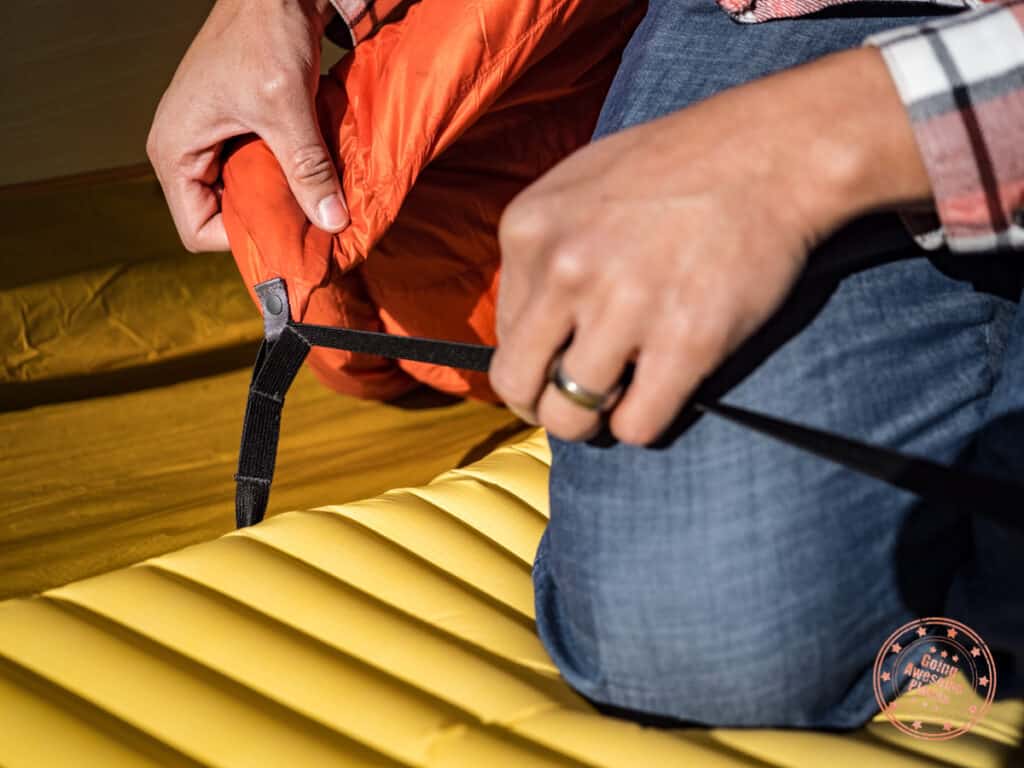
This is where the elastic cords that come with the trail quilt come into play. Wrapped around a sleeping pad such as the Thermarest Neoair X-Lite, you essentially snap your quilt into place at four points (2 near the top and 2 near the bottom).
Review of Kammok Quilts
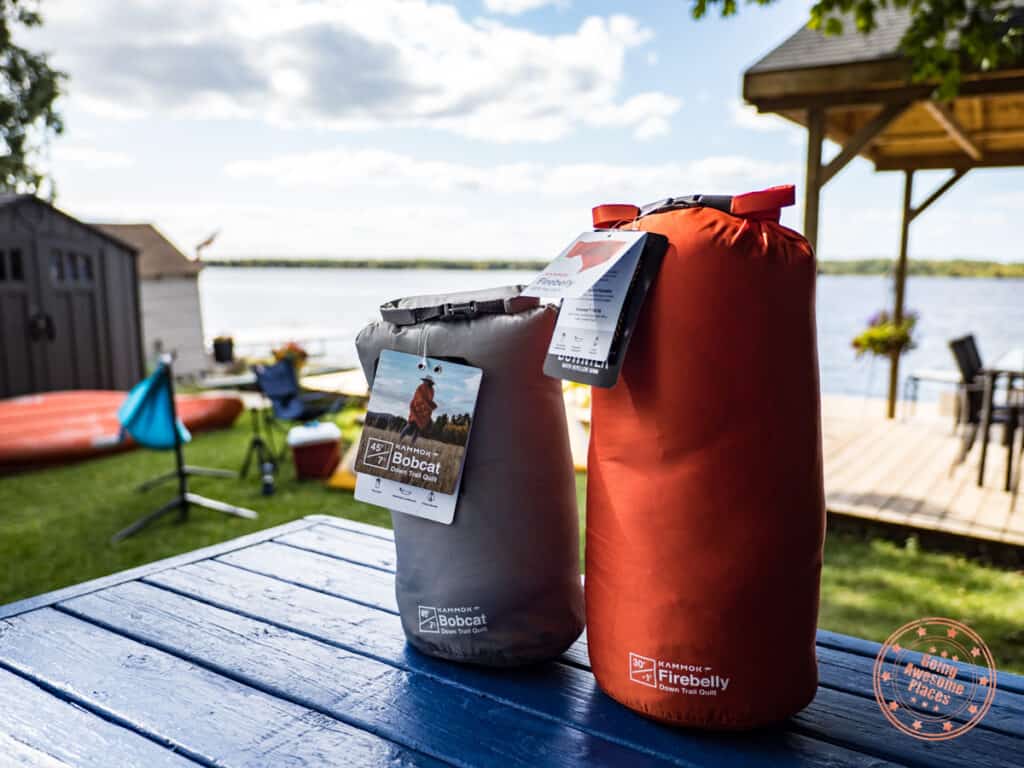
Two of the top trail quilts on the market are by Kammok. One is the designed for colder temperatures and the other is for more moderate temperatures as an all-purpose quilt.
Here is my review of the Kammok Firebelly and Bobcat.
Buy Kammok Quilts Now
If you like what you see, check out the product pages for the Kammok trail quilts.
Kammok Bobcat 45 Review
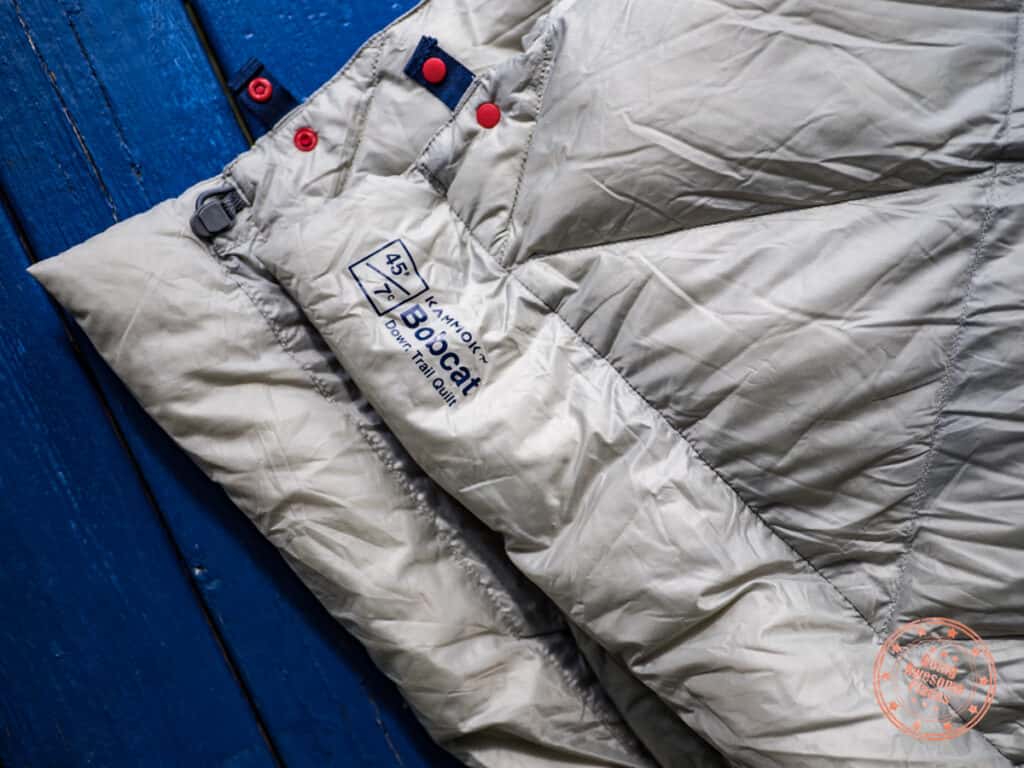
The Bobcat 45ºF is the perfect go-to quilt in almost all scenarios. Rated for 45ºF or 7ºC, it can adapt to anything you need it to do whether as a sleeping bag, hammock underquilt, overquilt, or camping blanket.
As with all Kammok products, everything is constructed of the highest quality.
The fabric is made out of Atmos 20D ripstop nylon fabric with DWR waterproofing and uses a diamond stitch to keep the DownTek water repellent down that is used to fill the inside. Something called Cire is a process to weld fabric fibers together and prevent down from escaping.
It’s the combination of the fabric and loft of the down that really makes this a quilt that you’re excited to use. The Bobcat is silky smooth and fluffy like clouds.
What makes the Kammok Bobcat even more attractive for someone looking to convert away from a traditional sleeping bag is that it’s made by a company that also specializes in hammocks.
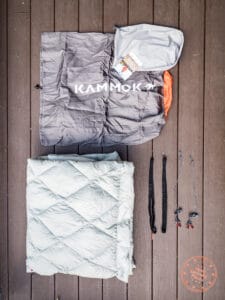
Whether you’re into hammock-ing or not right now, you also have the distinct advantage of knowing that all of your Kammok products are compatible with things like the Roo Single.
The Bobcat does admirably at preventing updrafts on any hammock as an underquilt and keeps your body warm and cozy as an overquilt.
The colorway that I have is Crater Gray and it’s a nice neutral set up that works everywhere whether you use it indoors or outdoors.
WHAT YOU NEED TO KNOW
Key features: Water repellent, lightweight, hammock compatible, packs to a small size.
Good for: Moderate to cool temperatures and those looking for a quilt that is lightweight and small.
Materials:
- Shell: Atmos 20D ripstop nylon fabric with Cire, DWR waterproofing and YKK snaps
- Fill: Downtek 600 FP
- Stuff sack: Diamond Shell 40D diamond weave ripstop nylon, PU waterproofing
Weight: 20 oz / 567 g
Dimensions:
- Unpacked: 84 in × 54 in / 213 cm × 137 cm
- Packed: 11.75 in × 6.5 in / 30 cm × 16.5 cm
Comes with:
- 1 x Bobcat 45ºF; 1 x Rolltop stuff sack; 2 x Sleeping pad straps; 1 x Underquilt conversion kit; 1 x Upcycled storage bag
Kammok Firebelly 30 Review
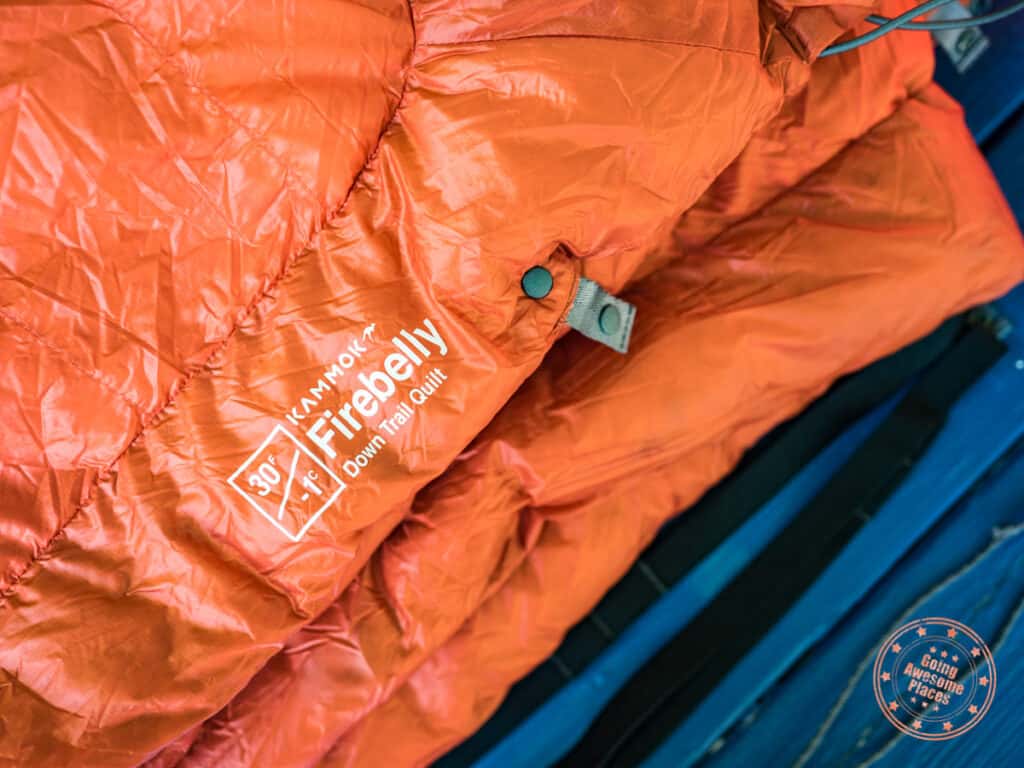
Everything I’ve said about the Bobcat 100% applies to the Kammok Firebelly 30ºF.
The key difference is that this quilt is rated for 30ºF or -1ºC. If you know that you’ll be camping around freezing temperatures, this is the one for you.
On my latest trip during the Canadian Fall season, the Firebelly was what I tended to pull out to use because there’s simply more insulation in the fill to keep you nice and toasty.
One thing hasn’t been mentioned so far is the DownTek that’s used. In both the Bobcat and Firebelly is responsibly source down which is treated to be water-repellent. The claim is that it absorbs 30% less water and drives 60% faster than untreated down.
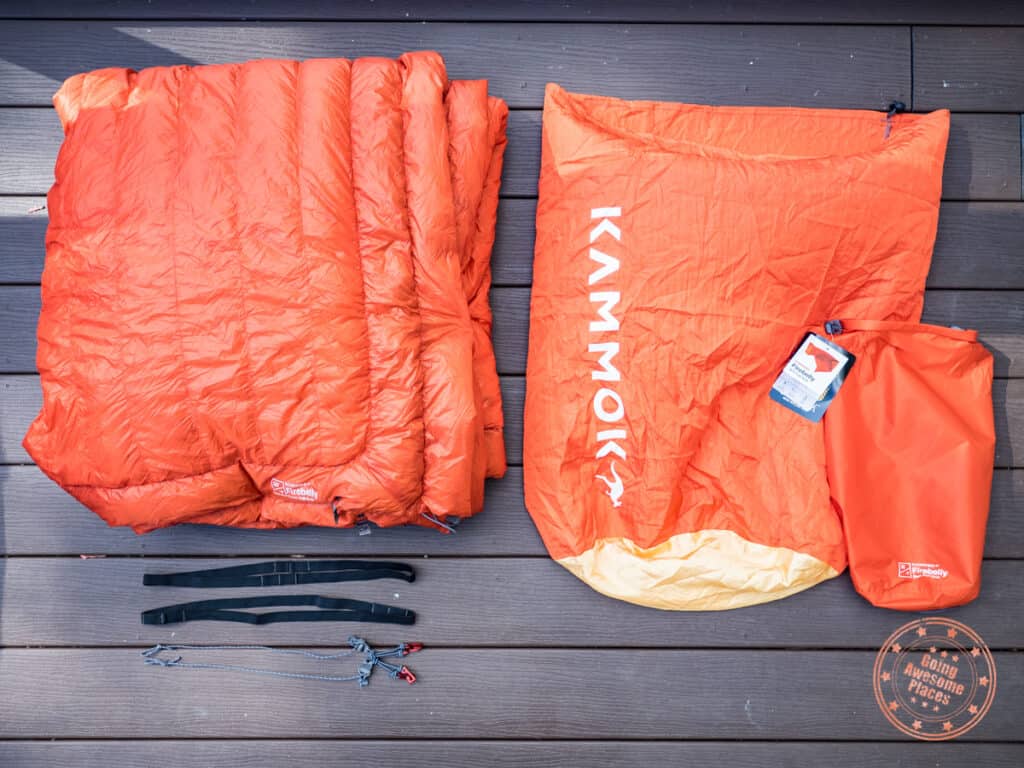
The design of the Kammok Firebelly is the same with button snaps, and shock cords on each end built in.
So how is the Firebelly different from the Bobcat?
- Stronger fabric – Uses a more abrasion-resistant Atmos X 15D ripstop nylon fabric.
- More fill – The lower temperature rating is achieved by denser fill and more of it.
- Heavier – Weighs in at 28.5 oz (808g) vs. 20 oz (567g). For reference though, the Marmot Ironwood 30 is 35.3 oz (1 kg).
- Slightly larger dimensions – Unpacked, the Firebelly is 2 inches larger on the longer side.
- Larger when packed – When you see the two side by side, it’s clear that the Firebelly is bigger.
- Different stitching – Instead of a diamond stitch to keep the fill in place, the Firebelly uses vertical lines across along the short side of the quilt. This has to do with the Firebelly’s integration of Insotech Flow technology which involves vertical thermal channels to distribute heat more readily from top to bottom and prevents the down from moving (no cold spots).
Primarily, the Kammok Firebelly is a lot warmer but you sacrifice compatibility and weight.
The colorway that is shown in the photos is a beautiful Ember Orange which is a nice punchy color that you could say is Kammok’s signature color and comes out really nice in photos.
WHAT YOU NEED TO KNOW
Key features: Strong shell fabric, increased insulation for lower temperature rating, and weather repellent coating.
Good for: Those that need extra warmth typically needed in fall and early winter conditions.
Materials:
- Shell: Atmos X 15D ripstop nylon fabric with Cire, DWR waterproofing and YKK snaps
- Fill: Downtek 750FP water repellent down
- Stuff sack: Diamond Shell 40D diamond weave ripstop nylon with PU waterproofing
Weight: 28.5 oz / 808g
Dimensions:
- Unpacked: 88 in x 55 in / 224 cm x 140 cm
- Packed: 14.2 in x 7.1 in / 36cm x 18 cm
Comes with:
- 1 x Firebelly 30ºF; 1 x Rolltop stuff sack; 2 x Sleeping pad straps; 1 x Underquilt conversion kit; 1 x Cotton storage bag
Frequently asked questions
It is recommended that you either spot-clean or hand wash when possible. In order to help maintain the DWR coatings, use cold water and Grangers Down Wash + Repel to extend its weatherproofing life. You can use a front-loading washing machine but you have to be careful.
This comes directly from Kammok. If the gear is soiled or stained, use the recommended amount of Grangers Down Wash + Repel. Do not use fabric softener, bleach, or stain removal products. Wash the trail quilt by itself using the gentle/cold water setting. Hang to dry, or use the delicate, no heat tumble setting on the dryer with a clean tennis ball, or dryer ball. Do not stuff back in stuff sack damp or wet.
Underquilt conversion kit is provided with both the Kammok Firebelly and Kammok Bobcat which allows these quilts to work well with hammocks of all sizes.
When you first take the quilt out of its stuff sack, give it a good shake and lay it on a flat surface for a day or two to give it time to loft.
Kammok, Therm-a-Rest, Enlightened Equipment, UGQ, Nunatak, Feathered Friends, Mountain Hardwear, Big Agnes, Nemo, Loco Libre, Katabatic, Warbonnet, Hammock Gear, and Zpacks.
Yes, underquilt extenders are used (bottom) which allow you to use your quilt as an underquilt for longer hammocks.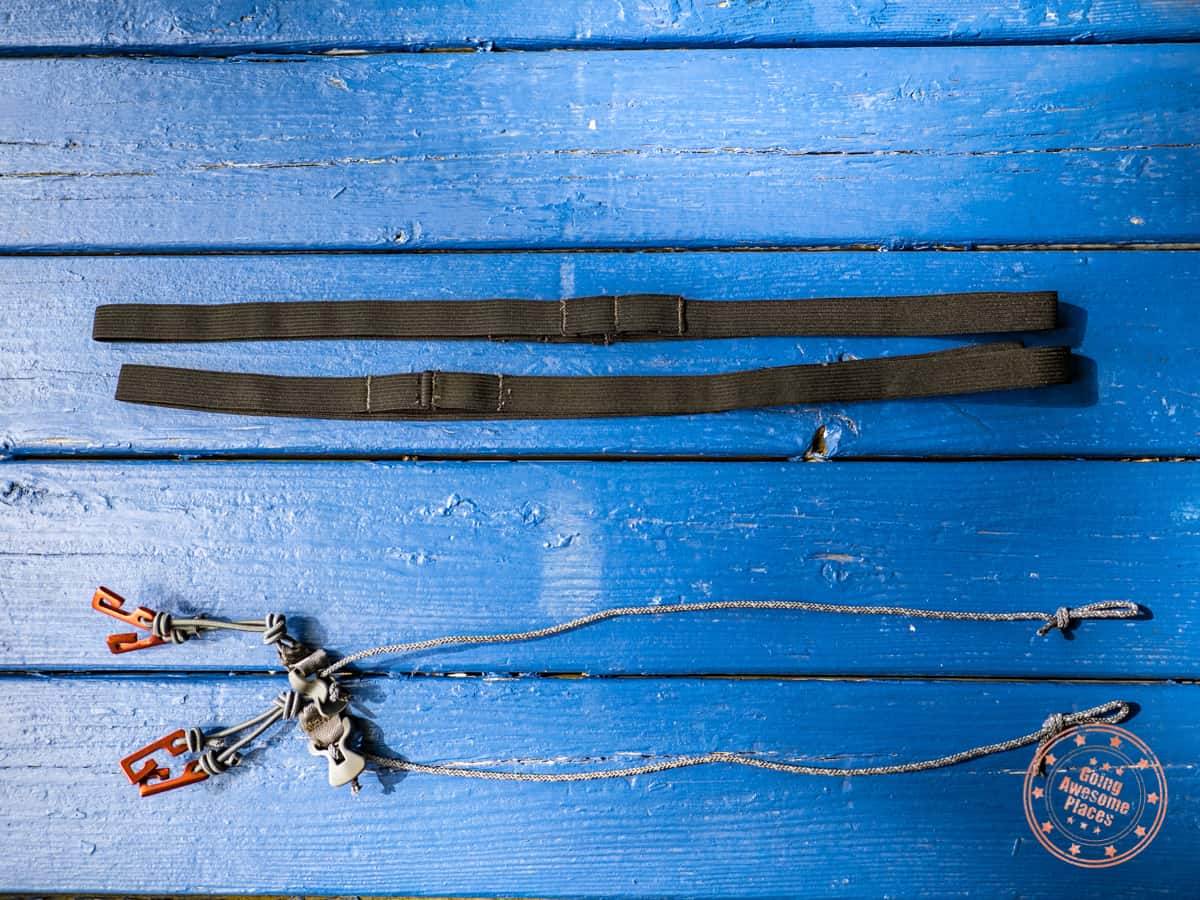
For cold weather, consider the Kammok Arctos which is rated for 20ºF or -6ºC. This makes a great underquilt and/or overquilt as it excels in the winter.
You need a quilt in your life
I feel like we’re on the cusp of the winds changing when it comes to how you stay insulated while outdoors. As we travel in so many different ways and in different environments, quilts are more capable of adapting versus the, shall we say, old school sleeping bags.
Check out the Firebelly and Bobcat!
Buy Kammok Trail Quilts
What you should read next

Leave a Reply